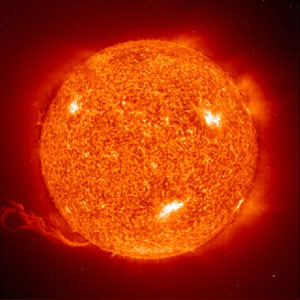
Using the RHESSI spacecraft, scientists managed to calculate the Sun’s roundness with a level of precision that surpasses anything of this type that has been attempted before. They found that the star which the Eart rotates around is not quite a sphere, but it has a thin “cantaloupe skin”.
This skin causes the equatorial radius to become a bit larger than the polar radius.
“The sun is the biggest and therefore smoothest object in the solar system, perfect at the 0.001% level because of its extremely strong gravity,” says study co-author Hugh Hudson of UC Berkeley. “Measuring its exact shape is no easy task.”
The probe named RHESSI, or Reuven Ramaty High-Energy Solar Spectroscopic Imager if you want the full name, observes the sun through a very slim slit and it spins at about 15 rpm. This speed and significant quantity of data allowed scientists do perform the necessary operations to determine the difference between polar and equatorial radius.
“We have found that the surface of the sun has rough structure: bright ridges arranged in a network pattern, as on the surface of a cantaloupe but much more subtle,” describes Hudson. During active phases of the solar cycle, these ridges emerge around the sun’s equator, brightening and fattening the “stellar waist.” At the time of RHESSI’s measurements in 2004, ridges increased the sun’s apparent equatorial radius by an angle of 10.77 +- 0.44 milli-arcseconds, or about the same as the width of a human hair viewed one mile away.”





